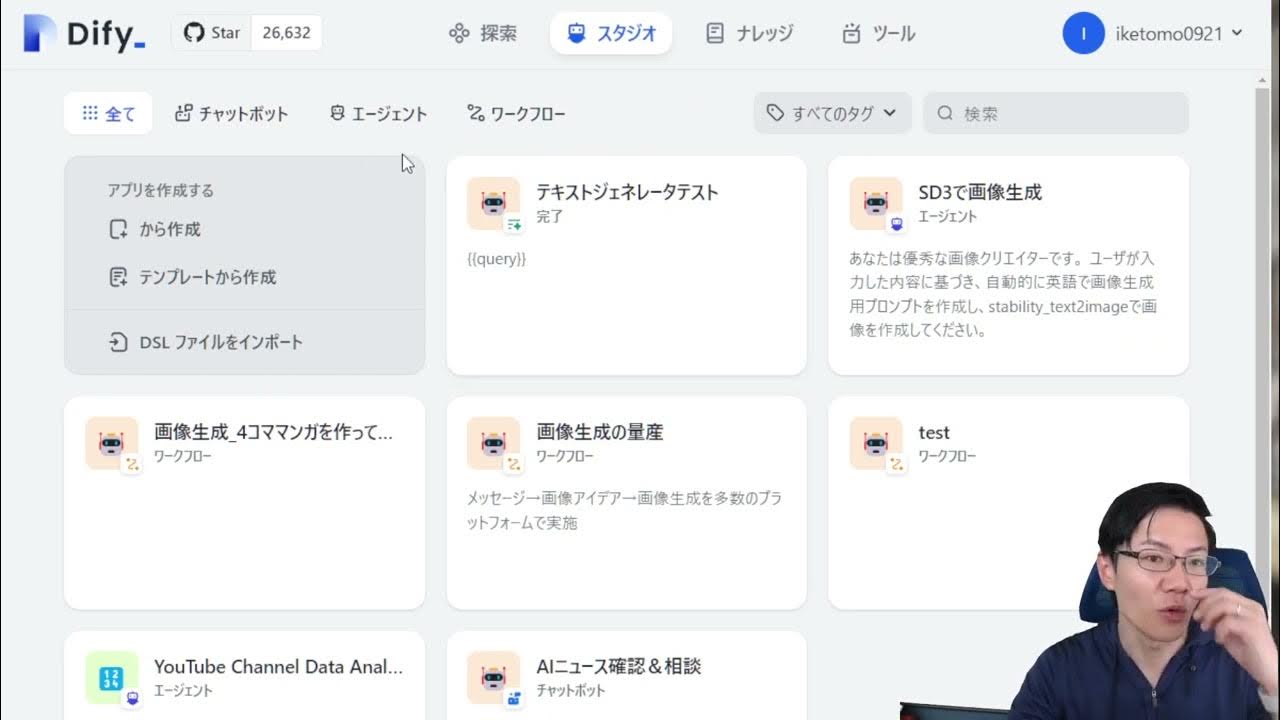Controlling Agents with Step-by-Step Execution (Part 5, Introduction to Agents)
Summary
TLDRこの動画では、より細かい粒度でエージェントをステップバイステップで制御できる「ステップバイステップ制御レベルAPI」について解説しています。低レベルAPIにより、タスクの作成と実行が分離され、各ステップと次に来るステップを確認できます。エミュレーションの実行方法とステップバイステップ実行の違いを示し、応答の各ステップを確認する方法を説明します。また、データの読み込みやインデックス作成、クエリエンジンの設定など、高度なプロセスをステップバイステップで実行する方法も紹介しています。
Takeaways
- 🤖 ステップバイステップで制御できるエージェントの紹介:低レベルAPIを使用して、より詳細にエージェントを制御できます。
- 🔍 タスクの作成と実行が分離されているため、各ステップと次のステップを確認できます。
- 📈 直接実行とステップバイステップ実行の比較で、実行の違いを実感できます。
- 🚀 関数呼び出しエージェントとリアクションエージェントの両方でステップバイステップで制御できるエージェントを使用できます。
- 📚 ノートブックでは関数呼び出しエージェントを使用して、ステップバイステップの実行方法を示しています。
- 🔢 演算の例として、20 + 2 * 4 - 8 の計算を通じて、ステップバイステップの実行方法を説明しています。
- 📊 データの分析に例として、R&D費用と収益の変化を分析する方法を説明しています。
- 📆 3月、6月、9月のUberの文書を用いて、データの読み込みと索引の作成方法を紹介しています。
- 🛠️ ステップバイステップで実行する際には、各ステップの出力を確認し、最終的なLLM応答を受け取ります。
- 🔄 ステップバイステップの実行中に、人間によるフィードバックを追加することができます。
- 🔍 ステップが漏れている場合でも、人間がフィードバックを追加して正しい方向に導くことができます。
Q & A
ステップバイステップ制御レベルエージェントとは何ですか?
-ステップバイステップ制御レベルエージェントは、より細かいアプローチでエージェントをステップスルーおよび制御できる低レベルAPIです。
タスクの作成とタスクの実行はどのように分離されていますか?
-ステップバイステップ制御レベルエージェントでは、タスクの作成と実行が分離され、各ステップを個別に表示し、次のステップと一緒に確認できます。
ステップバイステップ実行とは何ですか?
-ステップバイステップ実行は、一度に全てを実行するのではなく、各ステップを個別に実行し、確認することで、プロセスの理解やトラブルシューティングを容易にします。
リアクションエージェントと関数呼び出しエージェントのどちらがこのノートブックで使用されていますか?
-このノートブックでは、関数呼び出しエージェントを使用していますが、リアクションエージェントも使用することができます。
計算ツールを使用して何を実行できますか?
-計算ツールを使用すると、基本的な計算機能(例えば、加算、減算、乗算など)を実行できます。
ステップバイステップ実行の利点は何ですか?
-ステップバイステップ実行の利点は、プロセスの各ステップを個別に確認し、問題が発生した場所を特定し、適切な修正を行うことができることです。また、システムに人間フィードバックを追加することもできます。
データの読み込みとインデックス作成にはどれくらいの時間がかかりますか?
-データの読み込みとインデックス作成には、それぞれのドキュメントのページ数が多いため、時間がかかることがあります。
R&D費用と収益の変化を分析するために、どのようなエージェントを作成しましたか?
-R&D費用と収益の変化を分析するために、関数呼び出しエージェントを作成し、3月のツール、6月のツール、9月のツールを使用してクエリエンジンを定義しました。
ステップバイステップ実行中に人間フィードバックを追加するにはどうすればいいですか??
-ステップバイステップ実行中に人間フィードバックを追加するには、各ステップの出力を確認し、必要に応じて入力としてフィードバックを提供することで可能です。
ステップバイステップ制御レベルエージェントを使用する際に、最後のステップを識別する方法は何ですか?
-最後のステップを識別するには、各ステップの出力で「last」というフラグがfalseまたはtrueを返すかどうかを確認します。
このビデオスクリプトの目的は何ですか?
-このビデオスクリプトの目的是、ステップバイステップ制御レベルエージェントの使い方と、それがどのように役立つかを説明することで、視聴者の理解を深め、応用方法を提供します。
Outlines

This section is available to paid users only. Please upgrade to access this part.
Upgrade NowMindmap

This section is available to paid users only. Please upgrade to access this part.
Upgrade NowKeywords

This section is available to paid users only. Please upgrade to access this part.
Upgrade NowHighlights

This section is available to paid users only. Please upgrade to access this part.
Upgrade NowTranscripts

This section is available to paid users only. Please upgrade to access this part.
Upgrade NowBrowse More Related Video
5.0 / 5 (0 votes)






